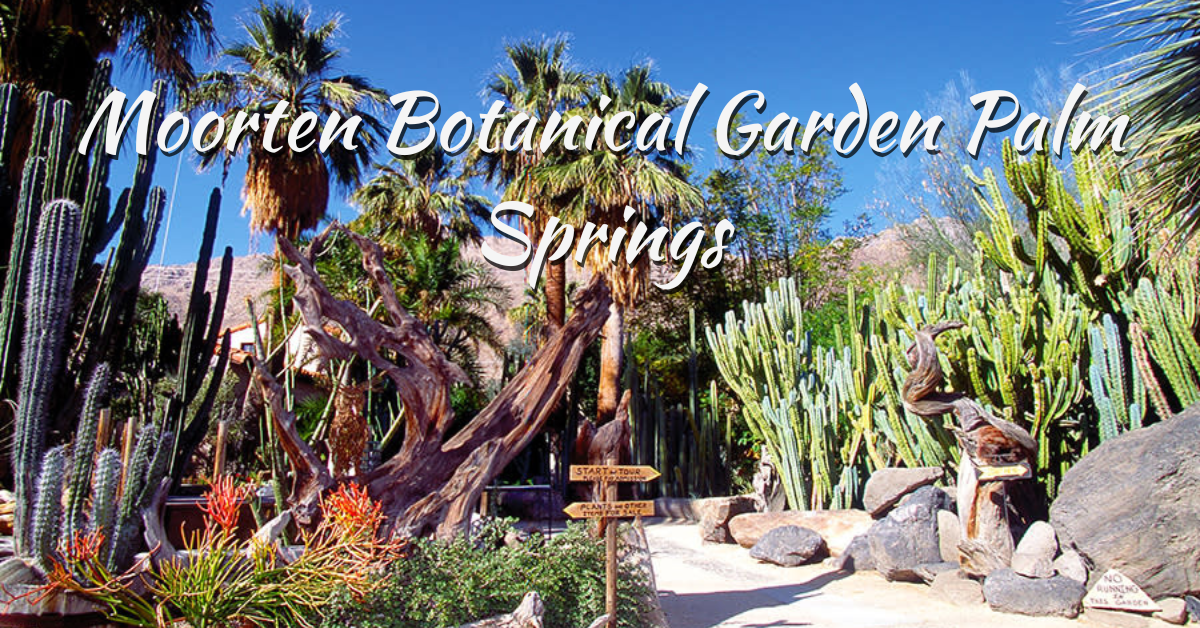Palm Springs is a desert haven in Southern California, offering stunning views, diverse terrain, and famous architecture. This Palm Springs Photography Guide will help you discover the best spots to capture the unique beauty of the area.
This guide will show you where to capture the spirit of Palm Springs. It’s for both novice and experienced photographers.
Each location offers unique photo opportunities, from stunning desert views to vibrant cities.
This guide to Palm Springs photography will cover its top sights. They include the Palm Springs Aerial Tramway, Indian Canyons, and Moorten Botanical Garden. Also, the city’s famous Mid-Century Modern architecture and the San Jacinto Mountains. Plus, the colorful street murals and sculptures.
Insider advice is provided in every section to help you make your photos as famous as Palm Springs.

Palm Springs Aerial Tramway: Capture Breathtaking Views from the Summit
This rotating aerial tramway is the largest in the world. It has significantly impacted contemporary cultural history.
- This tram journey takes you to the Mountain Station. It is located near the summit of San Jacinto Peak in Mount San Jacinto State Park. It passes through Chino Canyon, an important historical site of the Cahuilla tribe.
- The view from the top of the mountain is breathtaking. Plus, it’s an amazing chance to hone your photography skills.
- It is 400F colder at the top of the tramway than at the bottom, so wear warm clothing.
Opening Hours: Monday to Thursday: 10 am to 6 pm
Friday to Sunday: 8 am to 8 pm
Photography Tips for Capturing Palm Springs’ Scenic Beauty
- When it comes to lighting, timing is crucial. Try to shoot in the early morning or late afternoon. The soft, golden light at sunrise and dusk is perfect for dramatic landscape photos.
- Use wide-angle lens photos to show the mountains and vast desert. They will convey their grandeur.
- Record changes with the seasons. You’ll see a range of hues, depending on the season. In spring, the desert blooms with vivid colors. In winter, the mountains are snow-capped.
- For depth and interest in your photos, use the tramway trains, the cliff sides, or the desert floor as focal points.
Indian Canyon: Explore the Natural Oasis of the Cahuilla Tribe
This region is close to Tahquitz Canyon and nestled at the foot of the San Jacinto Mountains. It is the ancestral home of the Agua Caliente Band of Cahuilla Indians.
- Visitors can view relics like rock art and home structures. These are reminders of the communities that once thrived here.
- It contains the largest oasis of California fan palms, in the world.
Opening Hours: Daily 8 am to 4 pm
Expert Photography Tips for Capturing Palm Canyon’s Natural Wonders
- Palm Canyon: Take in the splendor of the biggest California Fan Palm oasis in the world. This location is ideal for expansive panorama photography or in-depth close-ups of the palms.
- After winter rains, the Andreas and Murray Canyons provide picturesque waterfalls. For a gentle, flowing water look, use a slow shutter speed.
- Beautifully dappled shadows that highlight the textures of the rock and greenery are created when morning light penetrates through the palm canopy.
- With the lush vegetation of the oasis and the golden desert tones, the picturesque surroundings make this a great place for portrait photography.
Moorten Botanical Garden: Discover Desert Flora Photography
The Cactuarium and Moorten Botanical Gardens are two of the most popular attractions in Palm Springs.
- The gardens feature three thousand specimens of desert cactus and other desert flora.
- Stroll through the botanical garden, snap photos, and get up close and personal with the stunning desert flora.
Opening Hours: Daily 10 am to 4 pm
Closed: Wednesday
Photography Tips for Moorten Botanical Garden
- Take close-up photos of cacti and succulents to showcase their textures.
- In spring, capture the vivid reds, yellows, and greens against the desert’s earthy tones.
- The garden, filled with natural light, is perfect for photos all day. Experiment with angles to highlight the plants’ shapes and patterns.
- Don’t miss photographing the symmetry of agave plants or the unique textures of barrel cactus.
Mid-Century Modern Architecture: Iconic Palm Springs Design
Palm Springs is famous for its mid-century modern architecture. It offers a rare chance for historical photography.
- For fans of architectural photography, this style is ideal. Its clean lines, geometric shapes, and simple patterns are perfect.
- Consider a few famous spots: Twin Palms Estates, Sunnylands, and Elvis Honeymoon Hideaway.
Photography Tips for Mid-Century Modern Architecture
- The best times for photos are early morning or late afternoon. The light then highlights the buildings’ shapes and lines.
- Notice the unique flat roofs, large glass walls, and vibrant color contrasts.
- Use a wide-angle lens to capture homes and buildings against the desert backdrop.
- To showcase mid-century modern design, experiment with symmetry and negative space.
San Jacinto Mountains: Landscape Photography Paradise
The San Jacinto Mountains have countless opportunities for landscape photographers.
- These imposing mountains frame the desert. Trekking the routes will give you a variety of viewpoints to check out.
Photography Tips for San Jacinto Mountains
- The best time to photograph the mountains is at sunset. That’s when the sun turns the desert into vibrant oranges and pinks.
- For a wide view of Palm Springs and its surroundings, hike to higher places.
- The mountains offer diverse moods and lighting for photographers, from summer’s dry floors to winter’s snowy peaks.
- For more depth, include desert plants like creosote shrubs or yucca in your photos.
Explore the Colorful Murals of Palm Springs
Every corner of Greater Palm Springs is filled with artistic life. It weaves a vibrant web of artistic expression that enthralls tourists and residents.
- Take a mural tour to see the creative spirit gracing this SoCal sanctuary’s streets.
- You can choose between a virtual journey or an in-person excursion.
- Explore a world of artistic wonders as you embark on your creative journey. Immerse yourself in a diverse range of captivating murals.
Photography Tips for Capturing Palm Springs Murals
- Document the relationship between the artwork and its environment, including the viewers.
- Make eye-catching compositions by utilizing the murals’ vivid, clashing colors.
- Use your imagination. Take pictures of the artwork from various angles. Highlight its forms, textures, and shadows.
- To show the mix of nature and urban landscapes, add city elements to your composition. Use palm trees or mid-century buildings, for example.
Extra Advice for Photographing Palm Springs Successfully

The Ideal Time to Go
The cooler months of October through April are the most photogenic in Palm Springs. The soft lighting and vivid hues make for great photos.
This is especially true for desert vistas. The intense summer heat can wash them out.
Photography Equipment
A DSLR or mirrorless camera with interchangeable lenses can capture a range of photos. You can take both expansive vistas and intricate macros.
If you want to take pictures at dawn and dusk, especially in dim light, don’t forget to pack a tripod.
Editing Tools
To improve your photos, use editing programs like Photoshop or Lightroom.
Adjust contrast, saturation, and highlights. This will enhance your images. It will bring out the textures of cacti and the hues of a desert sunset.
Keeping Your Equipment Safe
Photography equipment might suffer damage from the desert climate.
In windy or sandy conditions, protect your camera. Also, bring lens cleaners to remove dust.
Final Thoughts | Palm Springs Photography Guide
Palm Springs is a photographer’s dream. It has stunning nature, fine architecture, and a creative vibe.
Every corner in Palm Springs offers a chance for stunning photos. You can shoot the vast desert, the mid-century homes, or the city’s colorful murals.
You’re all set to discover the top locations for photography in Palm Springs with the help of this guide.
Every picture tells a story. There are many untold stories in Palm Springs, just waiting for your camera.
Palm Springs Photography Guide FAQs
1. What is the best time to photograph Palm Springs?
The cooler months from October through April are ideal for photography. The soft lighting and vibrant colors make the desert landscapes stand out. Try shooting during early mornings or late afternoons for the best lighting.
2. What type of camera is best for capturing Palm Springs?
A DSLR or mirrorless camera with interchangeable lenses is recommended. This allows you to capture a range of shots, from wide desert vistas to detailed macro photos of desert plants.
3. What photography equipment should I bring?
In addition to your camera and lenses, consider packing a tripod for stability, especially if you’re shooting during dawn, dusk, or low-light conditions. Bring lens cleaners to protect your gear from the desert dust.
4. Are there specific locations in Palm Springs best for photography?
Yes, some of the top spots include:
- Palm Springs Aerial Tramway for breathtaking mountain views.
- Indian Canyon for natural oases and palm trees.
- Moorten Botanical Garden for desert flora.
- Mid-Century Modern architecture for sleek, geometric designs.
- San Jacinto Mountains for dramatic landscapes.
- Palm Springs murals for colorful, urban photography.
5. What are the best photography tips for desert and landscape shots?
- Shoot during golden hours (early morning or late afternoon) for soft, flattering light.
- Use a wide-angle lens to capture the vastness of the desert.
- Experiment with foreground elements like plants or rocks for depth in your photos.
- Seasonal changes provide different color palettes; spring blooms or snow-capped mountains in winter create unique scenes.
6. How can I protect my photography gear in Palm Springs?
The desert climate can be harsh, with wind and sand posing risks to your equipment. Keep your camera protected in a camera bag when not in use, and use lens cleaners to remove dust particles that may settle on your lenses.
7. Are there any special considerations when photographing Palm Springs architecture?
Yes, Mid-Century Modern architecture is a highlight of Palm Springs. Early morning and late afternoon are best for photographing the geometric lines and sharp contrasts. Use a wide-angle lens to capture homes and buildings against the desert backdrop and experiment with symmetry and negative space to showcase the design elements.
8. What editing tools are recommended for improving my Palm Springs photos?
Use software like Photoshop or Lightroom to enhance your images. Adjusting the contrast, saturation, and highlights will bring out the textures of the desert and emphasize the vibrant colors of Palm Springs.
9. Is there a fee for visiting these photography spots?
Some locations like the Palm Springs Aerial Tramway and Indian Canyon may have entry fees. It’s a good idea to check ahead for hours of operation and any applicable costs before visiting.
10. Can I photograph Palm Springs’ murals freely?
Yes, the murals are public art pieces, and photographing them is encouraged. When shooting, consider capturing the murals’ relationship with the surrounding environment, such as buildings or people, to add more context to your shots.





